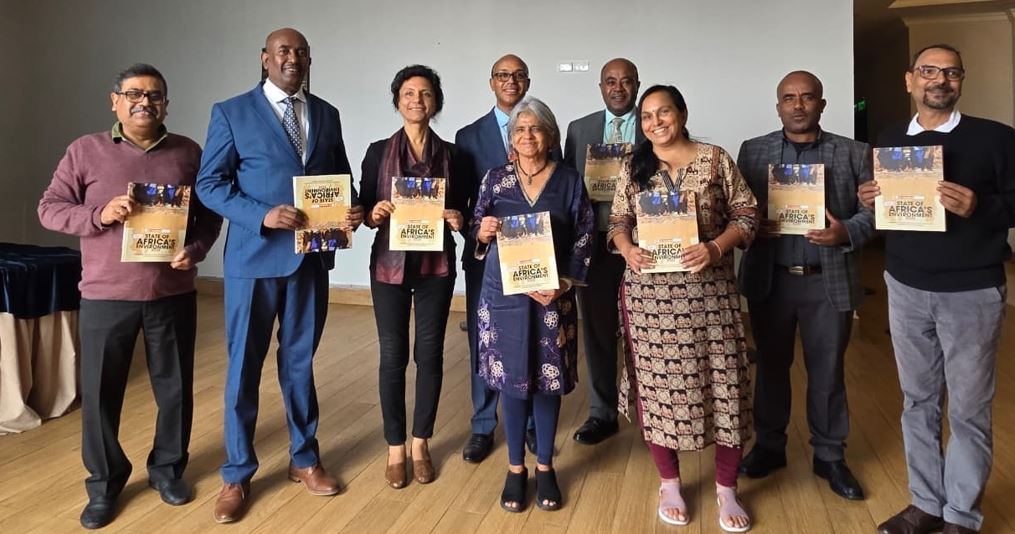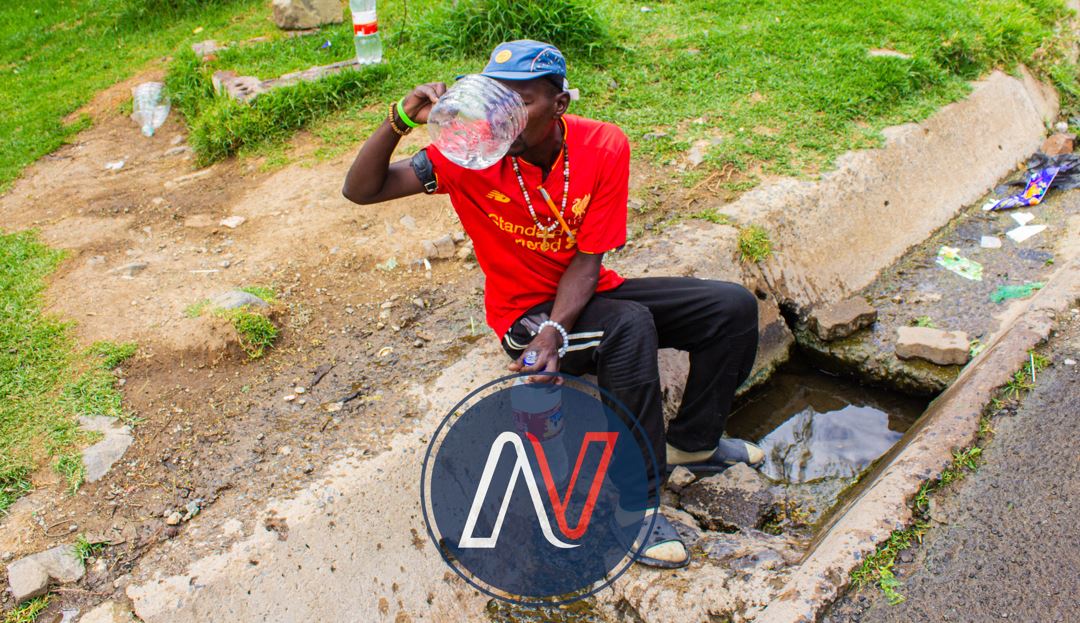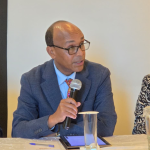…Lesotho’s Wake-Up Call and The Lessons of Mafeteng’s Water Crisis
Between November 2024 and March 2025, Mafeteng district in Lesotho lived through one of its harshest crises in memory, a reality that Africa is no longer waiting for climate change, it is living it.
Prolonged drought and blistering heat left dams in Mafeteng nearly empty, taps running dry and families queuing for scarce water.
Hospitals rationed what little remained, schools cut back and entire villages were reduced to waiting for tanker trucks.
For many Basotho, this was the first tangible experience of what scientists had been warning for decades: climate change is not tomorrow’s threat, it is today’s reality.
The State of Africa’s Environment 2025 report and Africa Too Hot To Cool study, both by the Centre for Science and Environment (CSE), released last week, confirms what Basotho lived through: Africa is warming 1.5 times faster than the global average with wide-ranging consequences on agriculture, water and public health.
The reports reveal Africa is warming at +0.3°C per decade, compared to the global +0.2°C.
“ In 2024, the continent’s average temperature anomaly was +0.87°C above the 1991–2020 baseline,” the State of Africa’s Environment 2025 report noted, citing the Southern Africa region, including Lesotho, is among the fastest warming regions, already brushing against the 1°C mark.
Without urgent action, the report’s projections suggest 3–6°C warming by century’s end in some areas.
The report further warns that the impacts will not be evenly spread but will devastate all regions. It notes that “nearly 35 African cities can experience more than 150 days of 40°C plus temperatures annually,” while West Africa could see 17–40 million climate-related migrants by 2050.
In Southern Africa, the report says ‘clear rises in heatwave frequency, intensity and duration’ are already visible, with projections of temperature increases of up to 6°C in interior regions.
The report outlines how different regions are affected in varied but equally alarming ways;
“ In West Africa, heatwaves are projected to rise by 3-6⁰C by mid-century, threatening livelihoods and potentially displacing up to 40 million people by 2050.”
“ East Africa, historically cooler, is expected to warm by between 1.5 and 5.4⁰C with rising extremes that could devastate both crops and pastorate systems.”
“ Southern Africa faces more frequent and intense heatwaves, while Central Africa, where dense forests once acted as buffers, will see nearly the entire population regularly exposed to dangerous heat once global warming reaches 2⁰C.”
The report indicates that the human cost of these rising temperatures is already visible with an estimated 300 million Africans exposed to life-threatening heat stress in 2024, representing 75 percent of global exposure to this risk.
The report further noted that by late 21st century, heat exposure could rise 12-fold with 10–30% more dangerous hot days and 6–20% greater intensity in West, Central & North East Africa.
The toll is not only measured in heatstroke cases but in cascading impacts: higher incidences of heart and kidney disease, food insecurity as yields decline, reduced labour productivity and growing migration pressures.
“Over the past 60 years, Africa has recorded a warming trend that has generally been more rapid than the global average… the climate has changed at rates unprecedented in at least 2,000 years.” State of Africa’s Environment 2025 report noted.
“ Between 2021-2025, Africa saw about 221.57 million people affected by extreme weather and deaths related to disasters jumped to about 28,759, over three times the number in 2016-2020.”
According to Afrobarometer (2024), 91% of Basotho say drought has worsened in their region over the past ten years, and 87% say crop failures have become more severe, while the Lesotho Vulnerability Assessment Committee’s 2024 report shows a 32% decrease in area planted in the 2023/24 season compared to 2022/23 due to El Niño-induced dry spells, with Maize production dropping by 52% in 2024 compared to the previous season.
While global warming and climate change are primary drivers of the local impacts, the Too Hot to Cool report broadens the lens, showing that Africa’s crisis is no longer confined to rural fields but is expanding into cities.
Urban growth, paved surfaces and shrinking green spaces, it says have created ‘urban heat islands’ that trap dangerous temperatures.
“In Lagos, built-up areas expanded by 70 percent in under a decade, cutting green cover to 13.8 percent. Johannesburg recorded land surface temperatures soaring to 45–51°C in extreme heat zones.”
“ Urban areas are emerging as epicentres of this crisis,” the report points to the Urban Heat Island (UHI) effect as a critical factor, with urban areas experiencing significantly higher temperatures due to impervious surfaces, dense buildings and reduced green cover.
“…wet-bulb temperature is particularly dangerous in humid African cities where the body’s natural cooling through sweating is compromised,” the report says, warning that energy demand is also expected to spira.
“Household electricity demand [in Africa] is projected to more than double from 160 TWh to 350 TWh by 2030” yet, most households remain energy poor.
To make matters worse, “…the continent is becoming a dumping ground for old and second-hand air conditioners that are more energy-inefficient… consuming two to three times more electricity than new models. These are cheaper upfront but consume significantly more electricity.
The authors of the reports stress that Africa cannot afford to limit its response to cooling alone.
“ African countries are beginning to combat this through regulations, import bans and the adoption of Minimum Energy Performance Standards (MEPS). Ghana for example has taken the lead to ban import of old and used air conditioners. Several African countries have or are developing building codes, standards and labelling for appliances to improve energy efficiency and are at different level of progress,” the report notes citing nearly 40 countries have adopted national cooling action plans or strategies in Africa.
“These largely align with the objectives of the Montreal Protocol to phase out ozone depleting refrigerants and improve energy efficiency of the appliances and cooling systems. Depending on the scope and design of these plans, some of these have recommended adoption of climate-responsive building architecture, passive cooling designs along with improvement in energy efficiency performance.”

“However, it is now necessary to do more than energy efficiency to address vulnerability, equity and heat resilience at building and city level. Countries need heat management plans and action.” they says, noting currently, Sierra Leone is the only African country with a dedicated Heat Action Plan.
“ The call is for others to follow with strategies that expand green and blue spaces, retrofit informal housing, strengthen healthcare systems, and implement early warning systems for heatwaves.
The World Health Organisation echoes this urgency, noting that heat waves account for substantial fatalities and illness worldwide while their frequency, duration, and intensity are climbing sharply, saying for Africa, the cost of inaction could be catastrophic. “Heat threatens not only human health but also the very systems that sustain life: food production, water supply, and economic productivity.”




